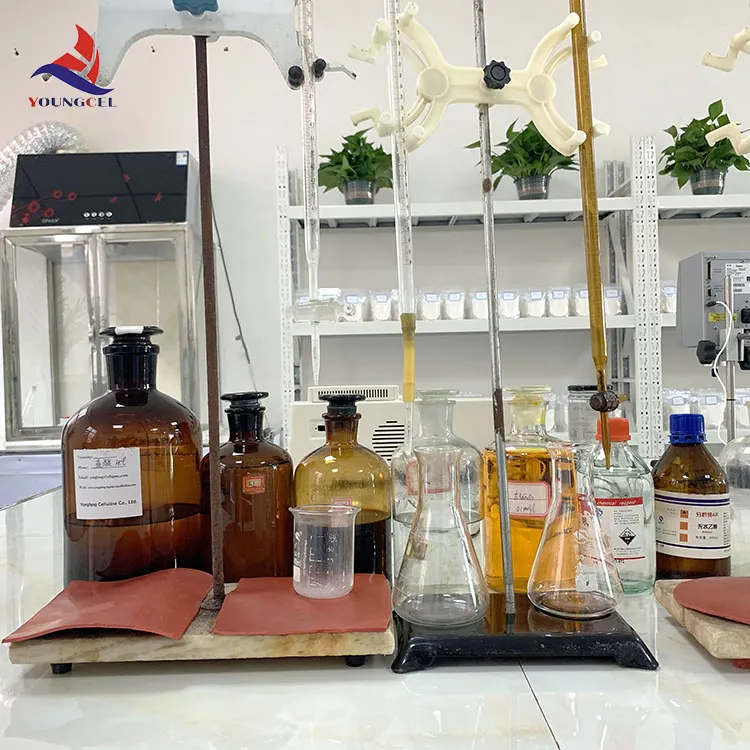Understanding HPMC Celulose A Versatile Polymer in Modern Applications
Hydroxypropyl Methylcellulose (HPMC) is a semisynthetic polymer derived from cellulose, the most abundant organic polymer on Earth. It has gained significant attention due to its versatility and wide range of applications across various industries, including pharmaceuticals, food, cosmetics, and construction. This article explores the properties and uses of HPMC, highlighting its importance in modern applications.
What is HPMC?
HPMC is created through the chemical modification of cellulose, which involves the substitution of hydroxyl groups with hydroxypropyl and methoxy groups. The resulting compound maintains the structural framework of cellulose while also acquiring unique physical and chemical properties. HPMC is known for its excellent water solubility, film-forming ability, and tendency to form gels, making it suitable for various applications.
Properties of HPMC
One of the key attributes of HPMC is its solubility in cold water, which allows it to form a viscous solution without requiring heat. This feature is particularly advantageous in processes where heat-sensitive ingredients are present. The viscosity of HPMC solutions can be adjusted by altering the concentration and the degree of substitution, allowing manufacturers to tailor the properties of the final product to specific needs.
Additionally, HPMC is non-toxic and biocompatible, making it an ideal choice for applications in the pharmaceutical and food industries. It is also resistant to oil and many organic solvents, further expanding its potential uses.
Applications of HPMC
1. Pharmaceutical Industry HPMC is widely used in the pharmaceutical sector as a binder, thickening agent, and film-coating material. It plays a crucial role in tablet formulation, where it aids in controlling the release rate of active ingredients. HPMC-based formulations can result in sustained-release or controlled-release medications, enhancing therapeutic effectiveness and patient compliance.
hpmc selulosa

2. Food Industry In the food industry, HPMC acts as a thickener, emulsifier, and stabilizer. It is commonly used in products such as sauces, dressings, and dairy products to improve texture and consistency. Its water retention properties contribute to moisture preservation in baked goods, extending their shelf life without compromising quality.
3. Cosmetics and Personal Care HPMC is a popular ingredient in cosmetic formulations due to its ability to enhance texture and skin feel. In creams and lotions, it provides a smooth application and improves the stability of emulsions. Its film-forming properties also make it suitable for hair styling products, offering a flexible hold without stiffness.
4. Construction Materials In construction, HPMC is often added to cement, mortars, and adhesives to improve workability and adhesion. It enhances water retention, allowing for better hydration of cementitious materials, which contributes to the strength and durability of the finished products.
5. Biotechnology and Research HPMC’s unique viscosity properties make it a valuable tool in laboratories, particularly in the fields of cell culture and drug delivery systems. Its ability to form hydrogels provides a suitable environment for cell growth and can be used in tissue engineering applications.
Environmental Considerations
As a cellulose derivative, HPMC is renewable and biodegradable, aligning with the growing demand for sustainable materials. The increasing awareness of environmental issues and the push for eco-friendly products have further solidified HPMC’s position as a desirable ingredient across multiple sectors.
Conclusion
Hydroxypropyl Methylcellulose is a multifunctional polymer that has transformed various industries through its unique properties and applications. Whether in pharmaceuticals, food, cosmetics, construction, or biotechnology, HPMC continues to showcase its versatility and effectiveness. As research advances and new applications emerge, HPMC is likely to remain a critical material in both innovative and sustainable practices, paving the way for future developments in multiple fields.
-
Rdp Powder: Key Considerations for Wholesalers in the Building Materials IndustryNewsJul.08,2025
-
Key Considerations for Wholesalers: Navigating the World of Hpmc - Based ProductsNewsJul.08,2025
-
Hpmc Detergent: Key Considerations for WholesalersNewsJul.08,2025
-
Key Considerations for Wholesalers: China Hpmc For Tile Adhesive, Coating Additives, Concrete Additives, and MoreNewsJul.08,2025
-
Crucial Considerations for Wholesalers: Navigating the World of Construction MaterialsNewsJul.08,2025
-
Key Considerations for Wholesalers Sourcing Additive For Cement, Additive For Concrete, Additive For Putty from Additive Manufacturer Shijiazhuang Gaocheng District Yongfeng Cellulose Co., Ltd.NewsJul.08,2025




